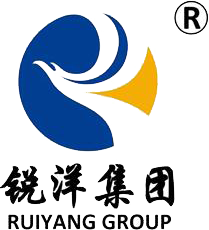
Sealing and Insulation: The Dual Mission of Cable Accessories
2025-10-24 15:55In the intricate network of underground and submarine power cables that form the circulatory system of our modern infrastructure, the most vulnerable points are surprisingly not the cables themselves, but their connections. At joints, terminations, and splices - where one cable segment meets another or connects to electrical equipment - cable accessories shoulder a vital dual mission that determines the reliability of the entire system. These components must provide both flawless electrical insulation and impenetrable environmental sealing, two functions that, while distinct, are deeply intertwined in ensuring the safe and continuous flow of electrical energy.
The Electrical Mission: Mastering the Invisible Force
The primary mission of any cable accessory is electrical insulation. A high-voltage cable represents a masterpiece of electrical engineering, with its meticulously designed insulation system - typically cross-linked polyethylene (XLPE) or ethylene propylene rubber (EPR) - perfectly containing the electrical field around the conductor. However, at termination or joint points, this carefully crafted system is fundamentally compromised as the built-in insulation must be cut open.
The accessory's crucial electrical duty is to restore this protective barrier seamlessly. It faces the challenge of controlling and reshaping the electrical stress that naturally concentrates at the point where the conductor's semi-conductive shield is terminated. Left unmanaged, this stress concentration would lead to partial discharges - microscopic electrical sparks that continuously erode the insulation material. These discharges, though initially tiny, represent the beginning of a destructive process that inevitably culminates in complete insulation failure.
Modern cable accessories employ sophisticated solutions to tame these electrical forces. Stress control cones, with their carefully calculated geometric profiles, gradually taper the electrical stress from the high-voltage conductor down to the grounded shield. Alternatively, materials with specific dielectric constants are used to create a smooth transition of the electric field. In pre-molded accessories, this electrical magic is accomplished through precisely engineered interfaces and semi-conductive layers that naturally redistribute the electrical stress, ensuring no single point bears excessive electrical pressure.
The Environmental Mission: The Unseen Battle Against the Elements
While the electrical mission deals with internal threats, the environmental sealing mission protects against external enemies. A cable accessory exists at the intersection between the controlled environment inside the cable and the harsh external world. Without perfect sealing, moisture, dust, chemicals, and other contaminants would inevitably infiltrate the connection.
Water represents perhaps the most dangerous adversary. When moisture penetrates an electrical connection, it can initiate multiple failure mechanisms. It may cause electrical treeing - a branching, dendritic degradation pattern that grows through the insulation material like lightning frozen in plastic. Water also increases dielectric losses, creates conductive paths along surfaces, and in cold climates, freezing and expansion can mechanically damage the most robust designs.
The sealing systems in cable accessories employ multiple defensive strategies. Cold-shrink and heat-shrink technologies create compressive radial forces that form primary moisture barriers. Water-blocking tapes swell upon contact with moisture, creating self-healing seals. Specialized sealants and mastics flow into microscopic gaps, while multi-interface designs create labyrinth-like paths that block moisture migration. For submersible applications, these systems must withstand water pressure while maintaining their integrity, much like the hatch of a submarine.
The Synergy: When Two Missions Become One
The true engineering marvel lies not in treating insulation and sealing as separate functions, but in their perfect integration. A brilliant electrical design becomes worthless if moisture can penetrate and destroy the insulation, while a perfect seal is meaningless if the internal electrical design promotes destructive partial discharges.
This synergy manifests in several critical ways:
Material selection must satisfy both electrical and environmental requirements simultaneously. Silicone rubber, for instance, offers excellent dielectric strength while maintaining its hydrophobic properties and flexibility across extreme temperature ranges.
The mechanical design must ensure that forces applied for environmental sealing don't compromise the delicate geometries needed for electrical stress control.
Thermal compatibility between all components is essential - different rates of expansion and contraction between materials can break seals or create new stress concentrations.
Installation procedures must be designed to protect both missions, recognizing that surface contamination invisible to the naked eye can compromise both electrical performance and long-term sealing.
Cable accessories represent one of the most sophisticated yet underappreciated components in power systems. Their successful execution of the dual mission of insulation and sealing transforms what would naturally be the weakest points in cable systems into some of their most reliable elements. Through advanced material science, precision engineering, and intelligent design, these components work silently and effectively, hidden from view yet crucial to our daily lives. They ensure that electrical energy flows safely and reliably from generation to consumption, protecting both the power system and the communities it serves. In an era of increasing dependence on electricity, the proper functioning of these unassuming components becomes ever more vital to our technological civilization.
